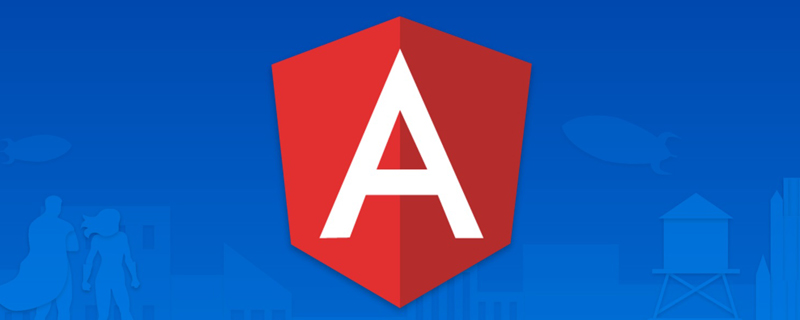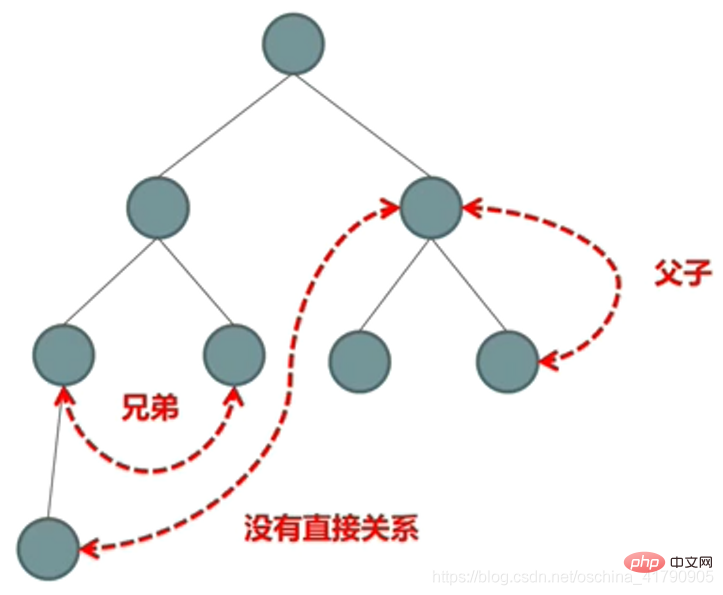本篇文章带大家详细了解一下angular中组件间通讯的几种。有一定的参考价值,有需要的朋友可以参考一下,希望对大家有所帮助。

Angular 组件间的通讯
组件间三种典型关系:
父好组件之间的交互(@Input/@Output/模板变量/@ViewChild)
非父子组件之间的交互(Service/localStorage)
还可以可以利用 Session、 路由参数来进行通讯等
相关教程推荐:《angular教程》
父子组件之间交互
子组件编写
- child.component.ts
@Component({
selector: 'app-child',
templateUrl: './child.component.html',
styleUrls: ['./child.component.css']
})
export class ChildComponent implements OnInit {
private _childTitle = '我是子组件';
@Input()
set childTitle(childTitle: string) {
this._childTitle = childTitle;
}
get childTitle(): string {
return this._childTitle;
}
@Output()
messageEvent: EventEmitter = new EventEmitter();
constructor() { }
ngOnInit(): void {
}
sendMessage(): void {
this.messageEvent.emit('我是子组件');
}
childFunction(): void {
console.log('子组件的名字是:' + this.childTitle);
}
} - child.component.html
{{childTitle}}
父组件
- parent-and-child.component.ts
@Component({
selector: 'app-parent-and-child',
templateUrl: './parent-and-child.component.html',
styleUrls: ['./parent-and-child.component.css']
})
export class ParentAndChildComponent implements OnInit {
constructor() { }
ngOnInit(): void {
}
doSomething(event: any): void {
alert(event);
}
}- parent-and-child.component.html
父组件
@Input 属性绑定是单向的,父组件的属性变化会影响子组件的属性变化, 子组件的属性变化不会反过来影响父组件的的属性变化。
不过,可以利用 @Input() 和 @Output() 实现属性的双向绑定。
@Input() value: string; @Output() valueChange: EventEmitter= new EventEmitter(); // 实现双向绑定
注意: 使用 [()] 进行双向绑定时,输出属性名必须是输入属性名与 Change 组成, 形如: xxxChange。
非父子组件之间交互
使用 Service 进行交互
- event-bus.service.ts
/**
* 用于充当事件总线
*/
@Injectable()
export class EventBusService {
evnetBus: Subject = new Subject();
constructor() { }
} - child1.component.ts
@Component({
selector: 'app-child1',
templateUrl: './child1.component.html',
styleUrls: ['./child1.component.css']
})
export class Child1Component implements OnInit {
constructor(private eventBusService: EventBusService) { }
ngOnInit(): void {
}
triggerEventBus(): void {
this.eventBusService.evnetBus.next('child1 触发的事件');
}
}- child1.component.html
child1 组件
- child2.component.ts
@Component({
selector: 'app-child2',
templateUrl: './child2.component.html',
styleUrls: ['./child2.component.css']
})
export class Child2Component implements OnInit {
events: Array = new Array();
constructor(private eventBusService: EventBusService) { }
ngOnInit(): void {
this.listenerEvent();
}
listenerEvent(): void {
this.eventBusService.evnetBus.subscribe( value => {
this.events.push(value);
});
}
} - child2.component.html
child2 组件{{event}}
- brother.component.ts
@Component({
selector: 'app-brother',
templateUrl: './brother.component.html',
styleUrls: ['./brother.component.css']
})
export class BrotherComponent implements OnInit {
constructor() { }
ngOnInit(): void {
}
}- brother.component.html
第二种:没有父子关系的组件间通讯
使用 localStorage 进行交互
- local-child1.component.ts
@Component({
selector: 'app-local-child1',
templateUrl: './local-child1.component.html',
styleUrls: ['./local-child1.component.css']
})
export class LocalChild1Component implements OnInit {
constructor() { }
ngOnInit(): void {
}
writeData(): void {
window.localStorage.setItem('message', JSON.stringify({name: 'star', age: 22}));
}
}- local-child1.component.html
LocalChild1 组件
- local-child2.component.ts
@Component({
selector: 'app-local-child2',
templateUrl: './local-child2.component.html',
styleUrls: ['./local-child2.component.css']
})
export class LocalChild2Component implements OnInit {
constructor() { }
ngOnInit(): void {
}
readData(): void {
const dataStr = window.localStorage.getItem('message');
const data = JSON.parse(dataStr);
console.log('name:' + data.name, 'age:' + data.age);
}
}- local-child2.component.html
LocalChild2 组件
- local-storage.component.ts
@Component({
selector: 'app-local-storage',
templateUrl: './local-storage.component.html',
styleUrls: ['./local-storage.component.css']
})
export class LocalStorageComponent implements OnInit {
constructor() { }
ngOnInit(): void {
}
}- local-storage.component.html
第三种方案:利用 localStorge 通讯
最后,关于使用 Session、路由参数实现数据交互的方式,这里就不演示了。
更多编程相关知识,请访问:编程视频!!






























